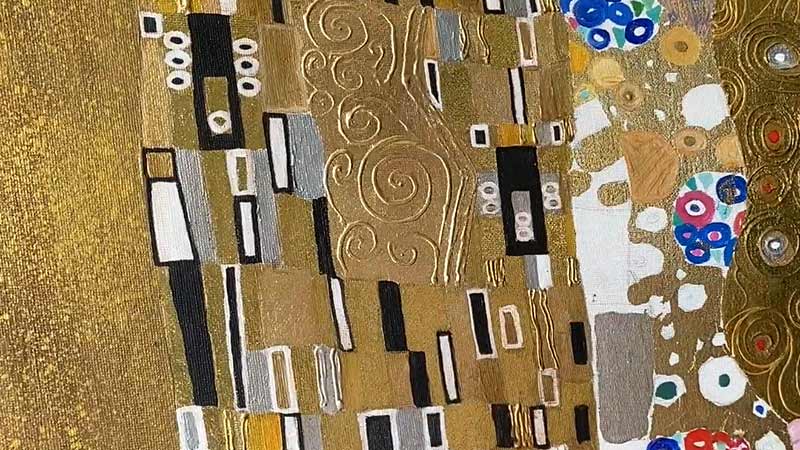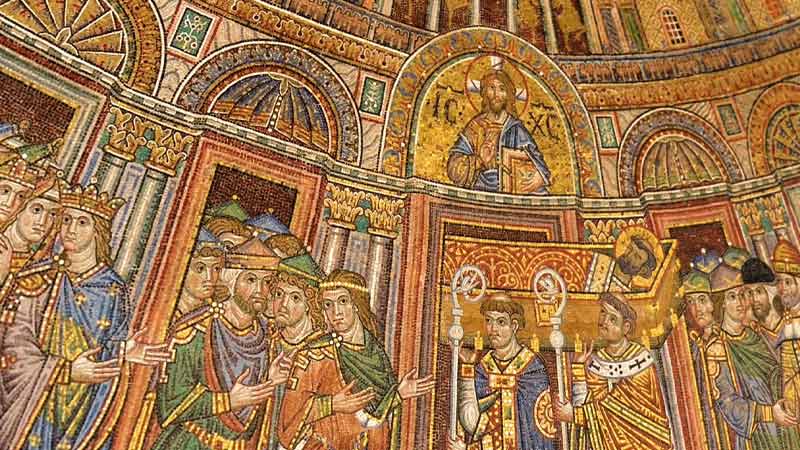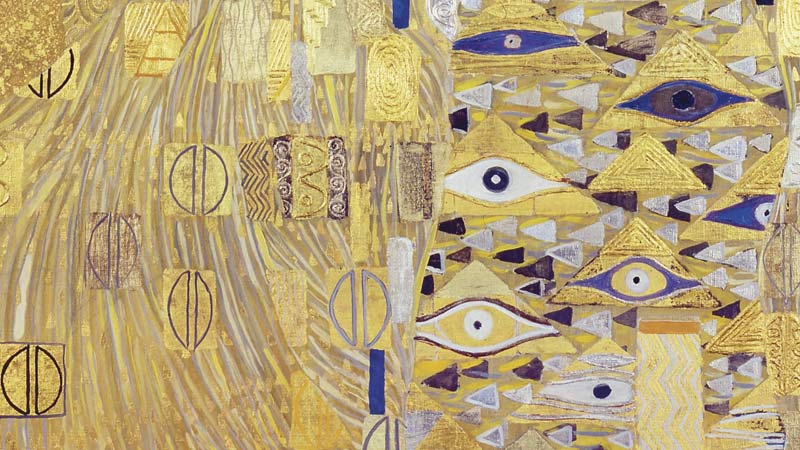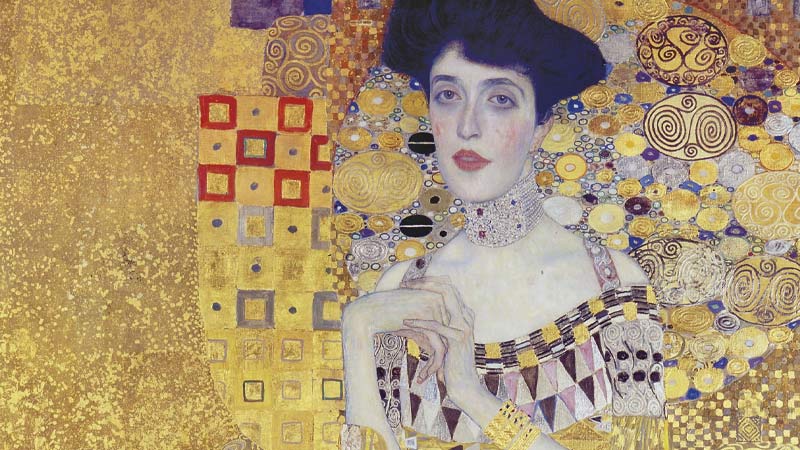Gustav Klimt is a renowned painter from Austria who is best known for his Golden Phase, a period in his artistic career where he used gold in his paintings to create a sense of luxury, opulence, and beauty.
Klimt’s use of gold has been a subject of fascination and controversy, with critics accusing him of prioritizing aesthetics over substance.
However, Klimt’s use of gold was not simply an indulgence in decoration, but rather a deliberate choice to highlight the importance of aesthetics in art. In this blog, we will explore why Gustav Klimt used gold in his paintings and how it reflects his artistic vision.
We will discuss his inspiration from Byzantine art and the Art Nouveau movement, as well as the symbolism and meaning behind his use of gold.
Finally, we will examine the controversy and criticism surrounding Klimt’s use of gold and provide our own analysis of its significance in art history.

Why Did Gustav Klimt Use Gold in His Paintings? 4 Reasons
Gustav Klimt, an Austrian symbolist painter, is well-known for his distinctive use of gold leaf in many of his paintings. He used gold for several reasons:
1. Influence of Byzantine Art

In 1903, Gustav Klimt traveled to Italy, where he visited the city of Ravenna and saw the Byzantine mosaics in the Church of San Vitale.
The Church of San Vitale is home to some of the most stunning examples of Byzantine art, and the mosaics in the church were particularly striking to Klimt.
Klimt was deeply influenced by the Byzantine mosaics in the Church of San Vitale, and their use of gold leaf to create a sense of luxury and opulence.
Klimt was particularly drawn to the way that gold was used in the mosaics to create a flat, decorative surface, rather than being used to create the illusion of depth and perspective.
Klimt was fascinated by the way that gold was used as an ornamental motif, rather than simply as a realistic representation of objects.
The flatness and lack of depth in the Byzantine mosaics in the Church of San Vitale enhanced their golden brilliance. By not creating the illusion of depth and perspective, the mosaics drew attention to the decorative use of gold and highlighted its reflective qualities.
Klimt was struck by the way that the gold in the mosaics seemed to glow from within, and he sought to replicate this effect in his own paintings.
Klimt’s use of gold in his paintings was a deliberate choice to create a sense of luxury and opulence, much like the Byzantine mosaics he had seen in Ravenna.
2. Art Nouveau Movement

The Art Nouveau movement was a decorative arts movement that emerged in the late 19th century and was popular in Europe and the United States until around 1910.
The movement was characterized by a focus on ornamental design, natural forms, and a rejection of the historical styles that had dominated the arts for centuries.
Klimt was deeply influenced by the Art Nouveau movement, and his use of gold leaf was in line with the movement’s aesthetic values.
The Art Nouveau movement emphasized decorative art and ornamental motifs, rejecting the traditional distinction between “high art” and “applied art.”
The movement sought to integrate all forms of art into everyday life and emphasized the importance of beauty and aesthetics in everyday objects.
Klimt’s use of gold leaf in his paintings was in line with the Art Nouveau movement’s aesthetic values. Klimt used gold leaf to create a sense of luxury and opulence, drawing attention to the decorative aspects of his work.
The use of gold leaf was not simply a decorative afterthought but an integral part of Klimt’s artistic vision. The Art Nouveau movement sought to integrate art into everyday life, and Klimt’s use of gold leaf in his paintings helped to elevate art to the level of luxury and opulence that was typically reserved for everyday objects.
3. Symbolism and Meaning

Klimt’s use of gold in his paintings had symbolic significance and was intended to convey specific themes and meanings.
Gold was a highly valued material throughout history and was associated with themes such as wealth, power, and divinity. By using gold in his paintings, Klimt was able to convey these themes in a powerful and effective way.
The use of gold in Klimt’s paintings represented themes such as wealth, power, and divinity. Gold was a rare and precious metal, and its use in art was often associated with royalty and the divine.
In Klimt’s paintings, gold was often used to symbolize the power and wealth of the figures depicted, as well as their divine or spiritual qualities.
Gold was also used to convey the idea of transcendence as if the figures depicted in the paintings were beyond the mundane world and had achieved a higher level of existence.
Examples of Klimt’s paintings that exemplify these themes include “The Kiss,” “Adele Bloch-Bauer I,” and “Judith and the Head of Holofernes.”
In “The Kiss,” the use of gold leaf highlights the luxurious and intimate nature of the scene, while also conveying the spiritual and transcendent qualities of the figures depicted.
In “Adele Bloch-Bauer I,” the use of gold highlights the wealth and status of the sitter, while also conveying her spiritual and intellectual qualities.
In “Judith and the Head of Holofernes,” the use of gold represents the power and divinity of Judith, who is depicted as a powerful and heroic figure.
In each of these paintings, Klimt’s use of gold serves to enhance the themes and meanings of the work, creating a powerful and evocative image that resonates with viewers.
4. Controversy and Criticism

Despite Klimt’s widespread popularity, he also received criticism for his use of gold in his paintings. Some critics accused Klimt of being too focused on aesthetics and superficial ornamentation, rather than on the deeper meaning of his work.
Critics of Klimt’s use of gold often accused him of prioritizing aesthetics over substance. They argued that Klimt’s use of gold was little more than a decorative flourish, added simply to make his paintings more visually appealing.
Some critics believed that Klimt was more interested in creating a decorative surface than in exploring the deeper themes and meanings of his work.
While it is true that Klimt’s use of gold was often a prominent feature of his paintings, it is important to note that it was ultimately a reflection of his artistic vision.
For Klimt, gold was not simply a decorative element but a means of conveying complex themes and ideas in a powerful and evocative way.
Klimt’s use of gold was part of a broader artistic approach that sought to integrate form and content into a cohesive whole, in which the visual elements of a painting were intrinsically linked to its deeper meanings and themes.
In this way, Klimt’s use of gold was ultimately a reflection of his artistic vision and not simply a superficial flourish added for the sake of aesthetics.
Gustav Klimt’s Use of Gold in Selected Paintings
| Painting Title | Year | Dimensions | Materials | Location | Significance of Gold |
|---|---|---|---|---|---|
| “The Kiss” | 1907-08 | 180 x 180 cm | Oil, gold leaf | Österreichische Galerie Belvedere, Vienna | Gold highlights the romantic and erotic nature of the scene, elevating the figures to a divine or mythic status |
| “Portrait of Adele Bloch-Bauer I” | 1907 | 138 x 138 cm | Oil, gold leaf | Neue Galerie, New York | Gold imbues the portrait with a sense of opulence and luxury, emphasizing the sitter’s status as a wealthy patron of the arts |
| “Judith and the Head of Holofernes” | 1901 | 84 x 42 cm | Oil, gold leaf | Österreichische Galerie Belvedere, Vienna | Gold represents the biblical story’s themes of violence and power, as Judith stands triumphantly over her vanquished foe |
| “Medicine” | 1900-07 | 202 x 201 cm | Oil, gold leaf | University of Vienna, Vienna | Gold represents the healing power of medicine, as well as the intellectual and cultural achievements of the medical profession |
FAQs
Klimt used gold leaf, a thin layer of real gold that is applied to a surface using a special adhesive. This technique gives the gold a rich, luminous quality that is hard to replicate with other materials.
No, Klimt was not the only artist to use gold in his paintings. Many artists throughout history have used gold as a decorative or symbolic element, including the ancient Egyptians, medieval European artists, and Japanese screen painters. However, Klimt’s use of gold is particularly noteworthy for its prominence and its association with the Art Nouveau movement.
No, Klimt did not use gold in all of his paintings. While gold is a prominent feature of many of his most famous works, such as “The Kiss” and “Portrait of Adele Bloch-Bauer I”, he also created many paintings without any gold at all. Klimt’s use of gold was ultimately a deliberate artistic choice, and he used it when he felt it was appropriate to the themes and concepts he was exploring in a particular work.
Yes, Klimt’s use of gold continues to be influential today, both in the art world and in popular culture. Many contemporary artists have been inspired by Klimt’s use of gold, and have incorporated it into their own work in new and innovative ways. Additionally, Klimt’s use of gold has become a cultural touchstone and is often referenced in fashion, design, and advertising.
Conclusion
Gustav Klimt’s use of gold in his paintings was influenced by a variety of factors, including his admiration for Byzantine art, the Art Nouveau movement, and his own artistic vision.
While some critics accused Klimt of prioritizing aesthetics over substance, his use of gold was ultimately a reflection of his broader approach to art, which sought to integrate form and content into a cohesive whole.
Through his use of gold, Klimt was able to convey powerful themes and ideas, such as wealth, power, and divinity, in a way that was both visually stunning and intellectually provocative.
Today, Klimt’s use of gold remains one of the defining features of his work and continues to inspire and captivate viewers around the world.
Leave a Reply